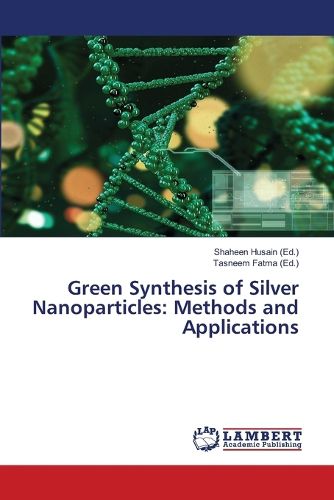Readings Newsletter
Become a Readings Member to make your shopping experience even easier.
Sign in or sign up for free!
You’re not far away from qualifying for FREE standard shipping within Australia
You’ve qualified for FREE standard shipping within Australia
The cart is loading…






This book explored the biosynthesis of silver nanoparticles using Nostoc muscorum and Microchaete sp. Among 30 cyanobacterial strains screened, these two were selected for further study based on their ability to produce smaller nanoparticles in less time. Optimization studies revealed that the best synthesis conditions included 2ml extract (2mg/ml) and 1ml AgNO3 (1mM), with a UV-VIS absorption peak at 440 nm. The optimal pH for synthesis was 5.5, with minimal aggregation. The best temperatures were 60 degreesC for Nostoc and 50 degreesC for Microchaete. UV exposure time influenced synthesis, with peak absorption at 60 minutes (430 nm). Characterization using SEM, TEM, AFM, XRD, and FTIR confirmed the spherical shape, crystallinity, and protein-based stabilization of nanoparticles. The particles measured 30 nm in Nostoc and 7 nm in Microchaete. Antibacterial activity was highest against Staphylococcus aureus, while antioxidant assays demonstrated strong activity. This eco-friendly method presents a scalable alternative to chemical synthesis for biomedical and technological applications.
$9.00 standard shipping within Australia
FREE standard shipping within Australia for orders over $100.00
Express & International shipping calculated at checkout
This book explored the biosynthesis of silver nanoparticles using Nostoc muscorum and Microchaete sp. Among 30 cyanobacterial strains screened, these two were selected for further study based on their ability to produce smaller nanoparticles in less time. Optimization studies revealed that the best synthesis conditions included 2ml extract (2mg/ml) and 1ml AgNO3 (1mM), with a UV-VIS absorption peak at 440 nm. The optimal pH for synthesis was 5.5, with minimal aggregation. The best temperatures were 60 degreesC for Nostoc and 50 degreesC for Microchaete. UV exposure time influenced synthesis, with peak absorption at 60 minutes (430 nm). Characterization using SEM, TEM, AFM, XRD, and FTIR confirmed the spherical shape, crystallinity, and protein-based stabilization of nanoparticles. The particles measured 30 nm in Nostoc and 7 nm in Microchaete. Antibacterial activity was highest against Staphylococcus aureus, while antioxidant assays demonstrated strong activity. This eco-friendly method presents a scalable alternative to chemical synthesis for biomedical and technological applications.